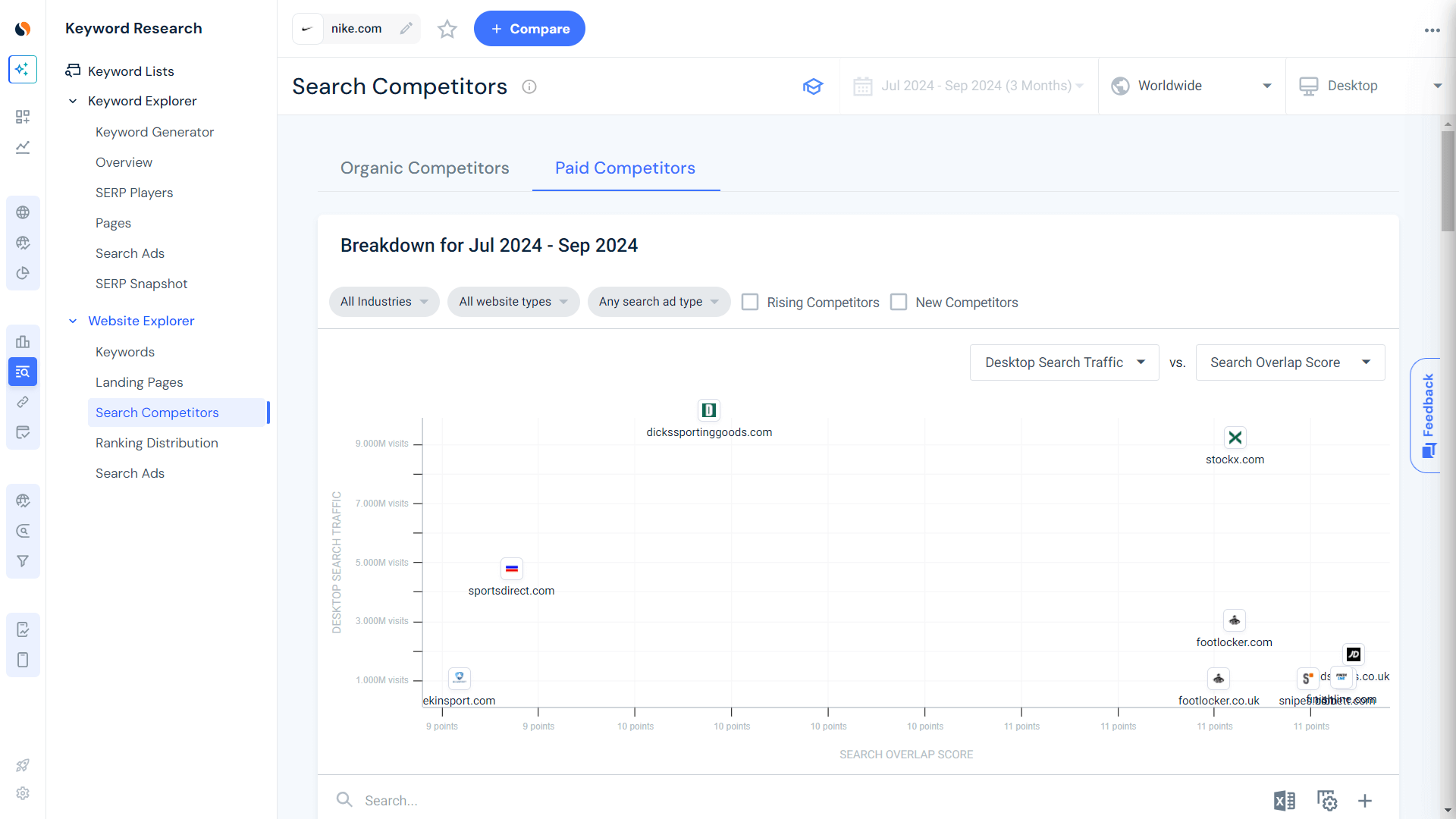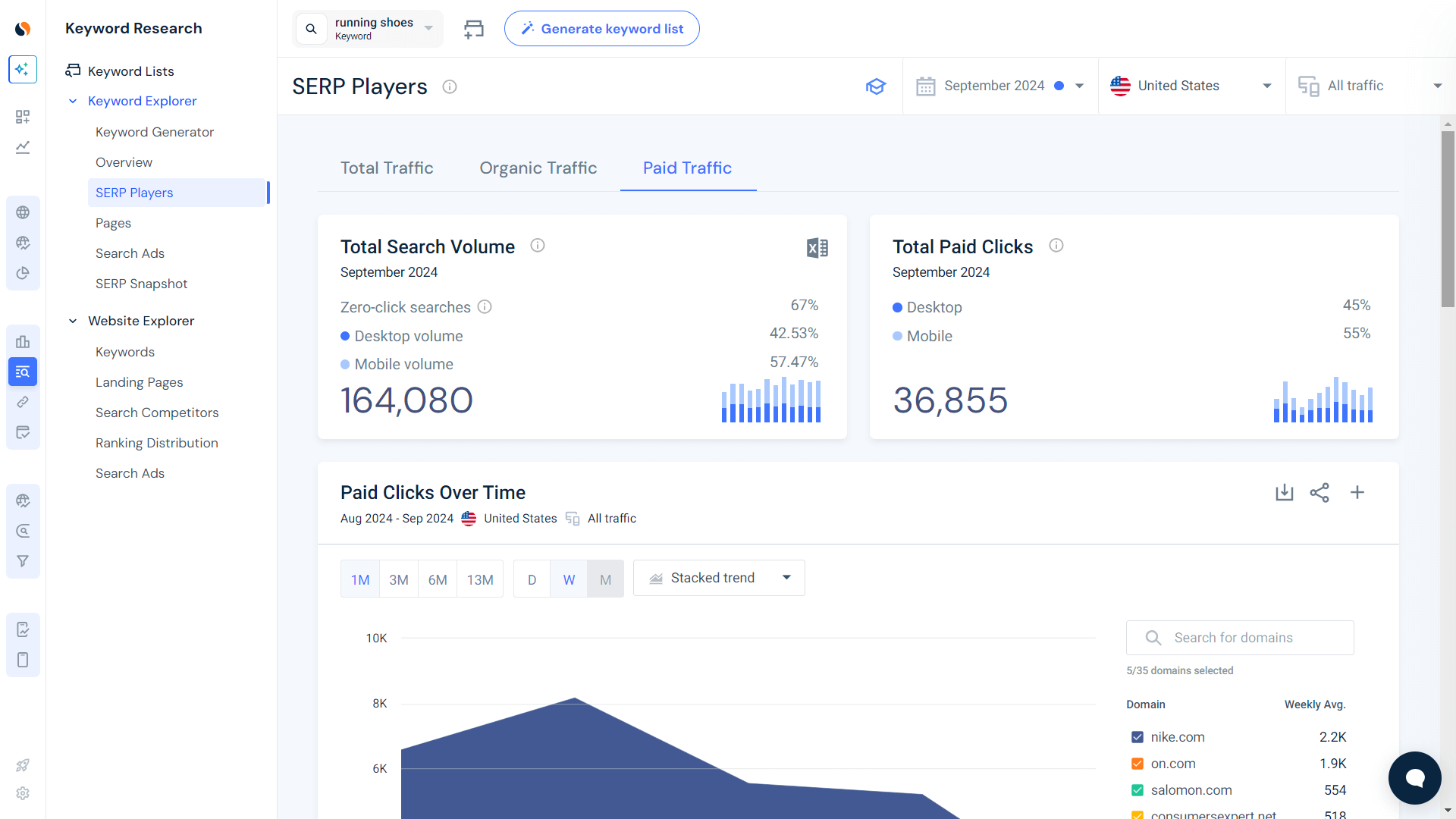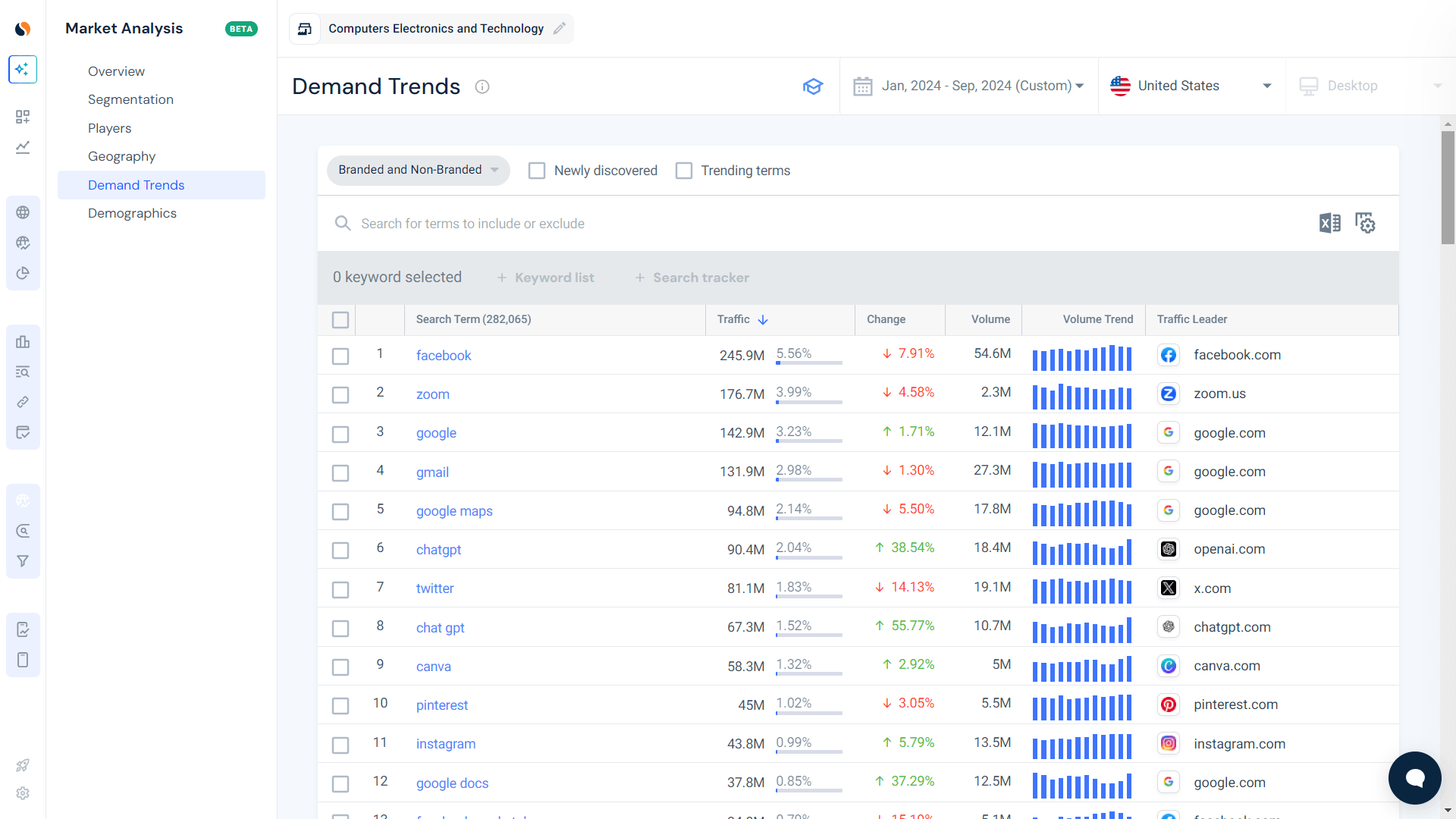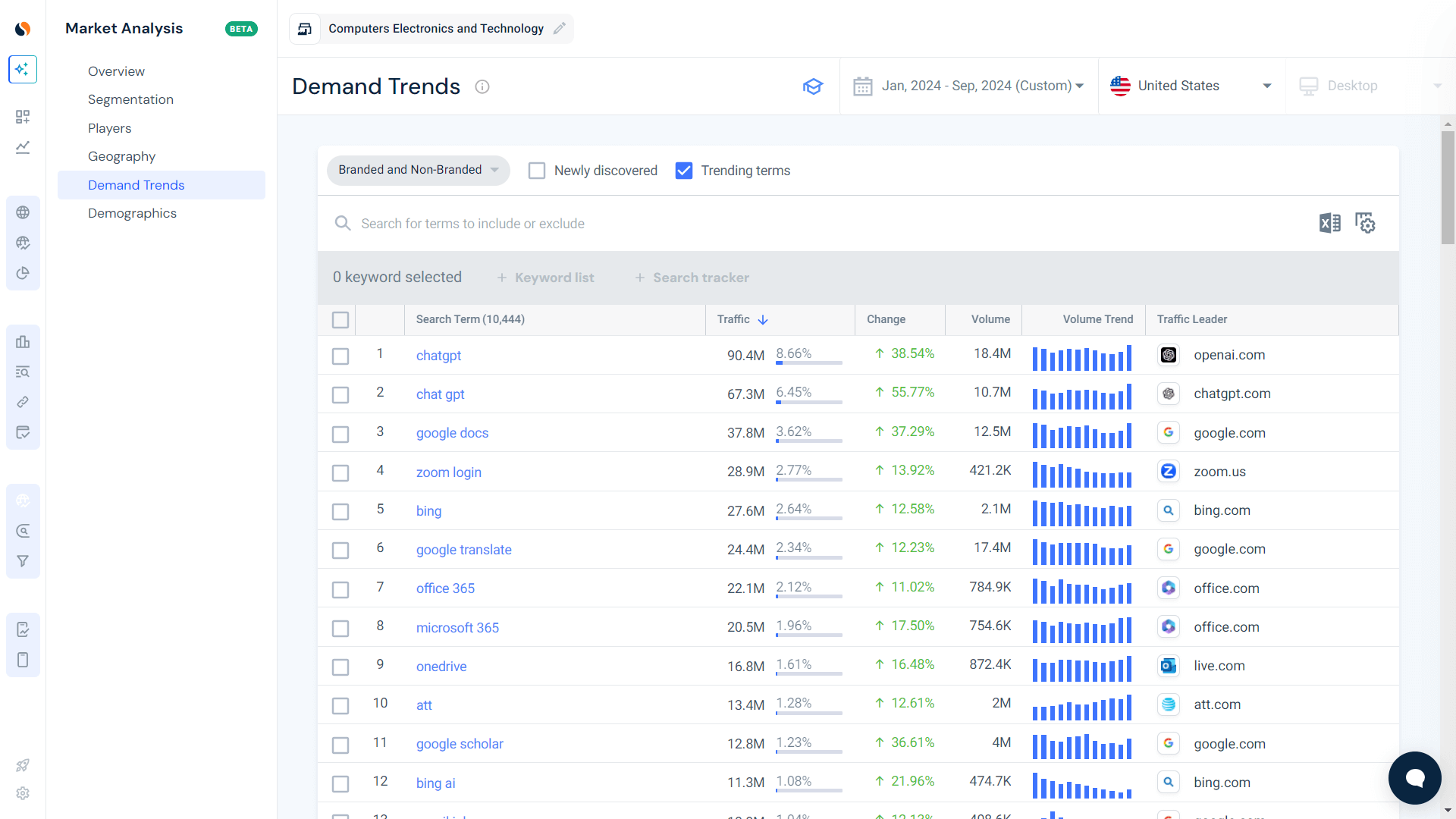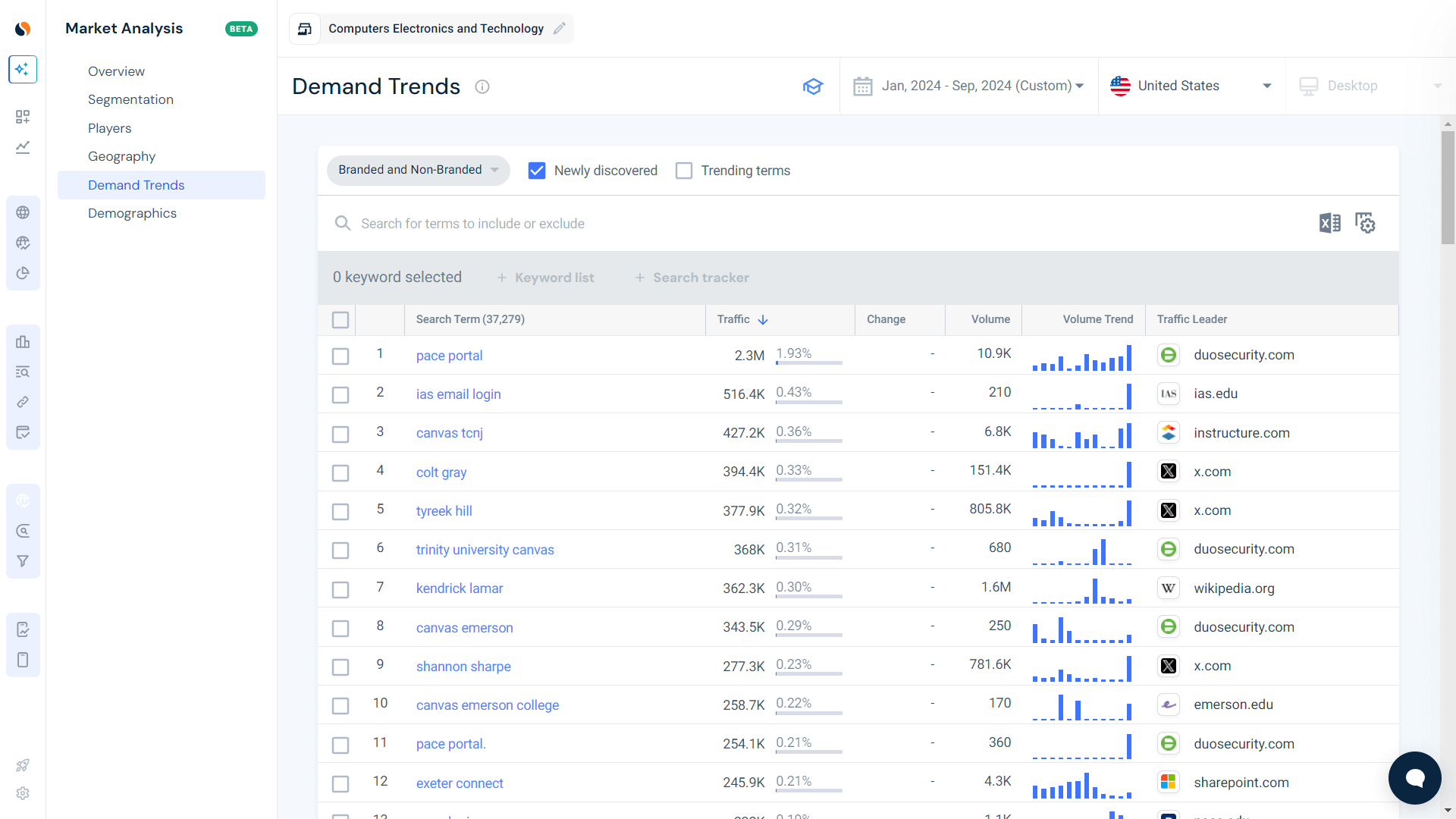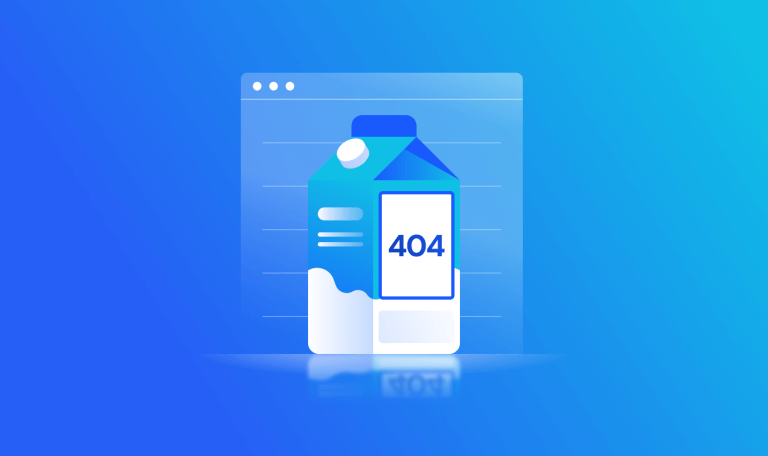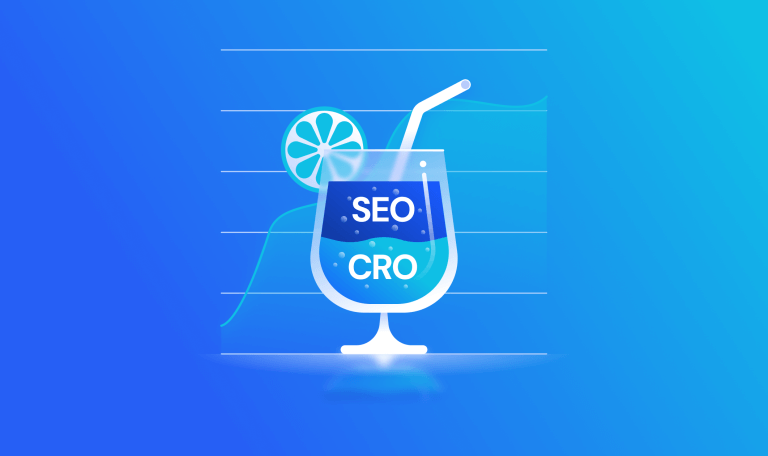PPC Forecasting: How to Predict Paid Acquisition Traffic and Costs

Predicting your PPC budget isn’t just about formulas. You need good, reliable data, too. Quality information helps you make better forecasts and use your ad money wisely, improving your ROI, which is especially important when markets change quickly.
After all, with solid information, you can reduce financial risks and make smarter choices about your PPC strategies, so you can ultimately put your money where it counts most.
What is forecasting in PPC?
PPC forecasting helps you estimate how much you’ll spend, how much traffic your ads will generate, and how many sales you might get from paid ads. It relies on past performance, current market trends, and potential future changes. Accurate forecasting allows you to plan smarter and maximize your ad spend.
Good forecasts set achievable goals by using real data to predict your return on investment. By analyzing past metrics like clicks, sales, and cost per sale, you can estimate the impact of changing bids, keywords, or budgets on future results.
PPC forecasting is all about predicting future ad spend, website traffic, and conversions based on historical data and market trends. This helps businesses plan and optimize their ad budgets for better results. Forecasting also sets realistic expectations for performance by analyzing past data to understand how adjustments in bids, keywords, or budgets may influence future outcomes.
Why is PPC forecasting important?
Understanding the effectiveness of PPC forecasting is crucial for running a successful campaign.
Here are some of the reasons why:
1. Budget planning
Accurate PPC projections allow you to estimate campaign costs and set realistic budgets. This way, you can ensure you have the proper funds to meet your goals. With a well-thought-out budget, you’ll have steady access to the necessary funds, avoiding any financial gaps along the way.
2. Performance optimization
Accurate parameter estimates help companies fine-tune keyword bids, maximizing ROI. With precise forecasts, you can make targeted adjustments to budgets and ad copy, ensuring resources are directed where they’ll impact your campaign goals most.
By refining your bid strategy to focus on the best-performing keywords and placements, advanced data analytics tools can play a crucial role. These tools analyze the data, offering valuable insights and suggestions to help you optimize your results efficiently.
3. Setting goals
Forecasting helps set realistic goals and KPIs, aligning your PPC strategy with business objectives. By estimating the traffic and conversions you’re likely to generate, you can fine-tune your campaigns to stay on track and meet your targets.
Additionally, forecast-driven goals are more motivating for employees because they’re both achievable and tied to performance. KPIs provide a straightforward way to track progress and allow quick adjustments to keep everything on course.
4. Risk management
PPC forecasting helps businesses anticipate market trends and gain valuable insights, helping them to stay ahead of risks and make informed decisions. By monitoring market conditions and adjusting strategies in real time, advertisers can better manage budgets and address issues proactively.
Accurate predictions before launching a campaign are important to financial stability. They allow advertisers to adapt to market share changes and prepare for unexpected events. With a well-developed plan, campaigns run smoothly, and teams are equipped to handle unforeseen challenges. In the end, effective forecasting leads to better campaign performance and a higher return on investment.
Key elements in PPC forecasting
Predicting an adequate PPC budget hinges on several key factors crucial for achieving high-performance, sustainable campaign results:
Historical data
While past performance can’t predict the future with certainty, previous statistics provide a solid foundation for forecasting. Metrics like cost-per-click (CPC), click-through rates (CTR), and conversion rates help identify trends and set appropriate benchmarks. Historical data also reveals seasonal patterns and market changes over time.
Businesses can fine-tune their strategies by analyzing past campaigns and setting more realistic targets. This historical perspective helps predict future trends and shifts, making forecasts more robust and actionable. Marketers can build on past successes and learn from previous pitfalls to refine their approach to future campaigns. Plus, this data enables real-time strategy optimization by providing evidence-based insights to companies.
Market and competitors
Looking at your competitors’ activities and understanding market trends is vital to smart PPC planning. It helps you set realistic benchmarks and spot opportunities others might miss. When you know which keywords your rivals focus on, what share of voice they have, and how they’re structuring their ads, you can fine-tune your strategy to stay competitive.
Similarweb’s Market analysis tool can be handy here. They give you a clear picture of market dynamics, competitor moves, and consumer behavior. By closely monitoring your industry, you can often anticipate shifts before they happen.
Seasonality
Campaigns often yield different results depending on the season. Awareness of seasonality helps your predictions account for changes in search volume and user behavior. This knowledge allows marketers to adjust budgets to match peak periods effectively.
Seasonality can significantly impact campaign ROI, especially for businesses relying heavily on seasonal sales cycles or during holidays like Christmas. When you factor in seasonality, your targeting becomes more precise. You can structure campaigns to capitalize on high-demand periods and tailor approaches for quieter times. By incorporating seasonal patterns into your forecasts, you can make better investments and maintain consistent performance throughout the year.
Goals
Setting clear objectives – such as clicks, conversions, or ROAS – provides targets for all forecasting efforts. By aligning forecasts with these goals, management can execute strategy more effectively. Solid and measurable objectives help focus the predictive process, making forecasts more actionable and better aligned with overall business aims. They also aid in resource allocation and form the basis for evaluating campaign success.
When marketers have specific targets, their activities become more focused. Goals and KPIs are benchmarks for judging campaign performance, making it easier to assess and adjust as needed.
Accurate PPC forecasting in 7 steps
Accurate PPC forecasting requires a systematic approach. Follow these steps to predict PPC traffic and costs effectively:
Step 1: Define KPIs & objectives
Start by identifying the KPIs crucial for your forecast models, such as cost per click (CPC), click-through rates (CTR), and conversion rates. Simultaneously, set clear objectives for your campaigns. Establishing these KPIs early allows for more targeted analysis and better performance measurement of each campaign.
Clear KPIs help marketers prioritize effectively. These indicators serve as benchmarks to measure your forecasts’ success and highlight improvement areas. With well-defined targets, PPC forecasting becomes a rigorous exercise in refining your data-driven strategy.
Step 2: Gather and analyze historical data
Collect data from previous campaigns, focusing on cost-per-click, conversion rates, and click-through rates. Examine this information for patterns and trends. Historical performance data provides a baseline for expected outcomes, guiding budget allocations and strategy adjustments.
You can gather this data using Similarweb. In the platform’s Website Analysis section, navigate to Search and then Paid Overview. This feature offers detailed insights into your competitors’ paid search strategies.
Gathering a comprehensive dataset is crucial for grounding predictions in reality. We can classify data through historical analysis to reveal long-lasting patterns, opportunities, and pitfalls. This analysis provides realistic and actionable insights, helping marketers to anticipate problems and make necessary adjustments.
Step 3: Analyze competitors’ performance and budgets
Use Similarweb to analyze your competitors’ PPC campaigns. You can determine their ad spend, placement strategies, and performance metrics. This information provides valuable benchmarks for your campaigns. By identifying your competitors’ strengths and weaknesses, you can refine your strategy to outperform them.
Similarweb offers the following valuable data:
Search Competitors: To identify competitors for specific keywords, navigate to the Keyword Research tool, then Website Explorer, and select Search Competitors. This page displays your top search rivals based on shared keywords and rankings.
SERP Players: To find paid competitors by website, click Keyword Research, then Website Explorer, and select Search Competitors. This provides a comprehensive keyword and phrase analysis, including trends and websites with high search volume for the target period and locations.
Having access to niche competitor data provides insights crucial for developing the right strategy. Conditions can change hourly in competitive markets, so you need constant monitoring to stay ahead.
Through competitor analysis, you can identify gaps in your strategy and opportunities to capture market share. Understanding your competitors’ tactics enables data-driven adjustments to your PPC strategies, helping you maintain a competitive edge.
Step 4: Consider seasonality
Plan for seasonal variation in consumer demand. With Similarweb, you can obtain useful data and information and invest your search budget efficiently during busy periods. Simply click on Market Analysis and then Demand Trends. Here, you will see valuable information about the following:
Top Keywords: See which keywords are the most searched in your market.
Trending Terms: See what keywords are taking off and growing in popularity.
Newly Discovered Keywords: Research new words that are just gaining traction.
The best part is these trends can be broken down by industry and country. This allows you to fine-tune your approach using real-time data on keyword performance across various industries and locations.
Seasonal analysis allows you to target campaigns based on consumer patterns during high-usage periods, maximizing participation and conversion. You can allocate more budget to seasonally appropriate campaigns that resonate with your audience. By incorporating seasonality into your predictions, you can invest efficiently and create the most impact when it matters most.
Step 5: Build your forecasting model
To build effective forecasting models, start by collecting past sales data, market research, and seasonal trends. From there, use a PPC forecasting tool or spreadsheet to run different scenarios and test various strategies. Since forecasting is a flexible process, you can test creative approaches and see how they might perform in different conditions. This step is crucial because it forms the backbone of your entire strategy, allowing you to adjust as market conditions change.
By tailoring your models to meet the specific needs of your industry, you’ll get more accurate predictions. When you combine data from different sources with predictive analytics, you can expand the scope and accuracy of your forecasts. A well-built model gives you a clearer picture of potential outcomes, making it easier to plan strategically and make informed decisions.
Step 6: Start forecasting
Start by entering your data into the forecasting model. Run estimates for any specific period and calculate clicks, impressions, and costs. Play around with different variables to see how changes in one or more factors affect outcomes under various conditions. This approach transforms your analysis into an actionable plan where data drives campaign success. A robust forecasting model also helps you prepare for scenarios where your assumptions prove correct.
The accuracy of your forecast depends on the quality of the input data and the assumptions in your model. It’s a good idea to test multiple versions to find what works best. You can improve forecast accuracy by using iterative techniques and running forecasts at regular intervals. Catching any issues early helps you make quick adjustments to keep your campaigns on track toward meeting your goals.
Step 7: Monitor, adjust, and re-forecast
Once the campaign is live, monitor its performance closely. Compare the results with your forecast, and adjust the models as needed. Regular adjustments are key to keeping the campaign on track and ensuring it meets your objectives while maximizing its impact.
By regularly updating your forecast model, you’ll account for any unexpected changes and improve the accuracy of future predictions. This ongoing monitoring helps you spot unusual patterns and provides valuable insights for fine-tuning future campaigns. With consistent updates, your forecasts will stay aligned with changing market conditions and evolving consumer behaviors.
PPC forecast templates
Templates can simplify the forecasting process and help you stay organized. Here are a few useful ones that you might find helpful:
1. Basic PPC forecast template
This template helps you track essential metrics like CPC, CTR, and conversion rate. It simplifies the process of estimating costs and outcomes, making it easy for those less familiar with PPC forecasting to deliver an informed “best guess.”
Whether you’re managing small or large campaigns, this template is incredibly useful. It ensures consistent tracking of your metrics while reducing forecasting errors. The best part is that it centralizes all your essential data points in one place, making it much easier to monitor the critical aspects of your campaign.
2. Seasonal forecast template
This template is designed to filter out seasonal variations. It helps you adjust your investments to match shifts in consumer behavior and allocate spending to peak periods. Plus, it ensures your efforts are as efficient as possible, especially during high-demand times.
For industries heavily influenced by seasonality, this template is ideal for maintaining strong campaign performance even during off-peak times. With a bit of customization to suit your specific market conditions, it can significantly improve the accuracy of your forecasts and help you stay strategically aligned.
3. Competitor analysis template
This template helps you track competitor activities and benchmark your campaigns against industry standards. By seeing how your competitors manage their campaigns, you can adjust your own strategies to stay competitive.
Knowing what your competitors are doing allows you to adapt your approach and better seize market opportunities. Benchmarking can also reveal areas for improvement and help you identify where you can gain an advantage. With this template, you’ll have a clearer view of the competition, making it easier to refine your campaigns and stay ahead.
Predict paid acquisition traffic and costs with precision
Accurate forecasts lead to better budget allocations and strategic adjustments, boosting ROAS and improving your campaign success rate. Choosing the right data partner is key, and Similarweb’s tools can enhance your ability to deliver strong results.
With Similarweb, you can access the most comprehensive, up-to-date, and reliable data available. Accurately predicting paid acquisition traffic and costs can significantly elevate your campaign performance. Start using structured PPC forecasting today to see the difference!
FAQs
How often should I update my PPC forecasts?
It’s best to update your PPC forecasts regularly, such as on a monthly or quarterly basis. This keeps your predictions up-to-date with the latest market trends and data, allowing you to continually optimize your strategies and align them with your business goals. Regular updates help ensure your forecasts remain relevant and responsive to shifting objectives.
Can forecasting help reduce ad spend waste?
Yes, definitely. The more accurate your forecasts, the better you can allocate your budget, reducing the money spent on underperforming keywords and channels. This results in less wasted ad spend, more efficient use of resources, and a stronger ROI.
How can historical data improve my PPC forecasts?
Historical data offers insights into past performance, helping you establish realistic benchmarks by identifying trends. By analyzing what worked (and what didn’t) in the past, you can make more accurate predictions for future campaigns. This makes your forecasts data-driven rather than speculative.
Can I rely solely on automated tools for my PPC forecasting?
While automated tools can be helpful, combining them with manual analysis will give you the most accurate results. This approach provides a more complete view, so you can have greater confidence in your data and decisions.
How does competitor analysis improve PPC forecasting accuracy?
Competitor analysis lets you see how your PPC efforts compare within your industry. By understanding your competitors’ strategies, you can identify gaps, opportunities, and potential threats. These insights, in turn, can help you allocate your PPC budget more precisely, leading to more informed and accurate forecasts.
Sources
The #1 PPC tool - get started
Give it a try or talk to our marketing team — don’t worry, it’s free!

